BAAM: “Better living through mycology” in California
Published 10 April 2018 by Cherise Fong
The Californians of the BAAM collective, not content to simply forage, cultivate and craft mushrooms, believe in their power of remediation. Between DIY oyster mushroom workshops, they take action in regional forest parks. We followed them into the woods.
Oakland, special report
Some mycologists like to forage in the woods for mushrooms to cook and ferment into a gourmet delight. Others prefer to take samples back to the lab, observe the growth of mycelium in a Petri dish, sequence its DNA and discover new species. Still others love to concoct the fruiting bodies into medicinal cures, craft them into colorful dyes or sculpt them into new materials. Then there are those who firmly believe in the power of mycology to save the planet. This is the case, along with all of the above, of the Bay Area Applied Mycology (BAAM) collective in California, who welcomed us into their space at Counter Culture Labs in the East Bay of San Francisco, and who showed us the forest for the trees.
Enrique and the polypores
Enrique Sanchez, a long-time member of BAAM, lifts a corner of the burlap covering a eucalyptus stump inside Redwood Regional Park in Oakland. “See the mycelium growing on the wood?” he says. “You can see the difference with the other stumps not treated by us. Here, there are no sprouts. Within a couple years, the stump will be completely decomposed by the mycelium.”
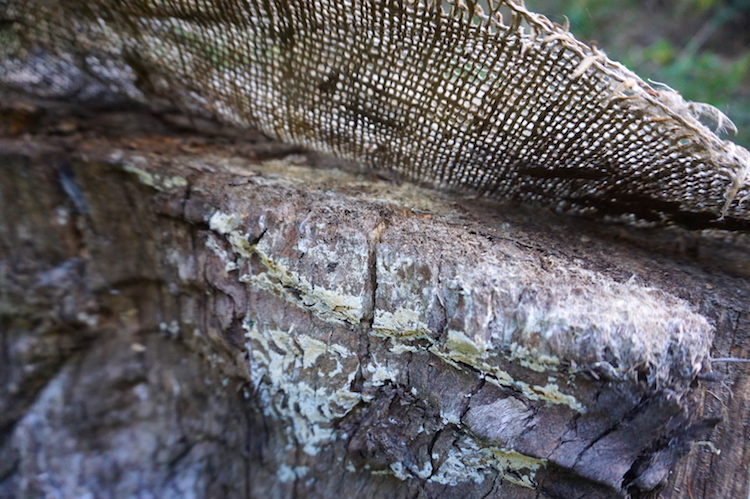
The original plan of the park rangers, who chopped down the trees they believed to be a fire hazard, was to spray the stumps with the herbicide Garlon. But this potentially toxic herbicide could also end up in the drinking water of communities living downstream. If the stumps are instead inoculated with mycelium, not only does the wood decomposes more quickly, it does so organically. It’s one of BAAM’s many mycoremediation projects in the East Bay Area.
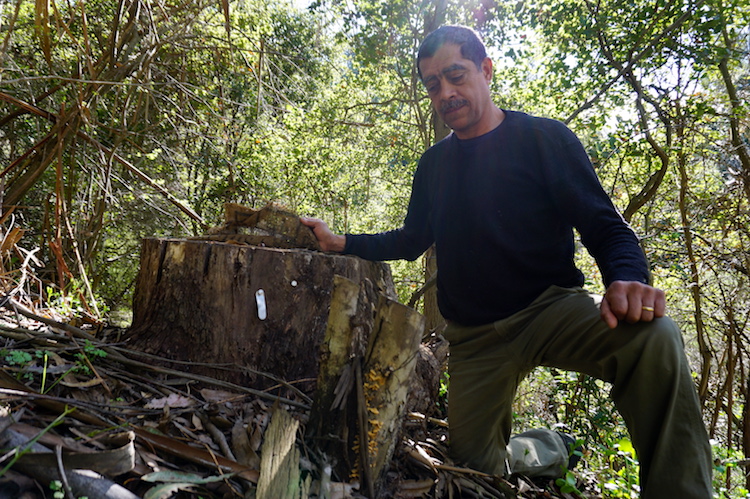
All mushrooms have a symbiotic relationship with plants, Enrique explains. He identifies three main types: parasitic mushrooms that grow on other organisms and change them; mycorrhizal mushrooms that exchange nutrients with trees; saprophytic mushrooms that decompose organic matter, which translates into compost.
To decompose the eucalyptus stumps, BAAM introduced two saprophytic polypores: Trametes versicolor (turkey tail) will eat the outer white cellulose of the tree, while Laetiporus sulphureus (chicken-of-the-woods) will eat the inner brown cellulose of the wood. Around twice a year, BAAM members return to the park to verify and document the progress of the project. Their next idea is to oil the chainsaw directly with mycelium-infused oil.
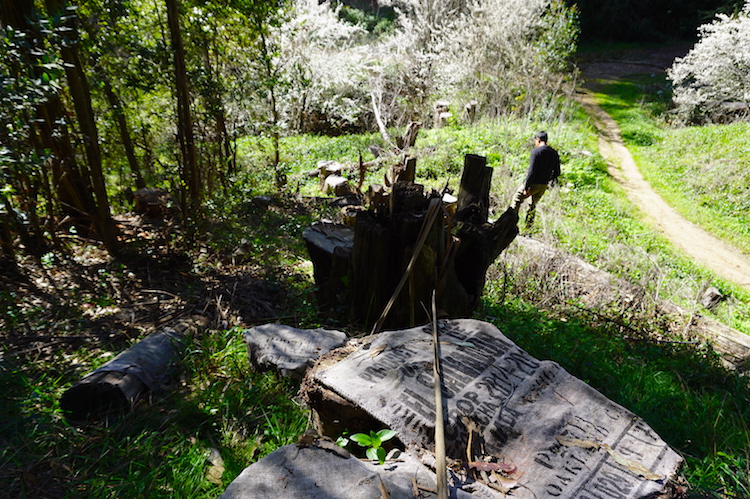
Like many members of BAAM, Enrique is also a member of the Mycological Society of San Francisco (MSSF). Founded in 1950, it’s one of the largest amateur mushroom groups in the United States. But while MSSF is mostly interested in the gourmet and medicinal aspects of mushrooms, BAAM, created in November 2011 as Bay Area Radical Mycology, promotes DiY mycology to heal the planet. In the process, they renamed themselves Bay Area Applied Mycology. “Radical is a pretty strong word,” says Enrique. “Rather than activists, we’re more like stewards.”
Enrique recalls BAAM’s first major project, in collaboration with the East Bay Municipal Utility District in 2013: creating a mycelium-based filtration system to eliminate E.coli bacteria from the water flowing downstream. There was a high risk of contamination from the feces of cattle grazing in Orinda above the reservoirs that provide drinking water to the East Bay Area.
In addition to these mycoremedial actions around the region, initiated by Mino de Angelis—a charismatic mycologist and one of BAAM’s founding members—the group regularly participates in local eco-friendly events, gives conferences and workshops to learn about all aspects of mushrooms. One of their most popular activities is a workshop to bag straw inoculated with mycelium in order to grow oyster mushrooms at home.
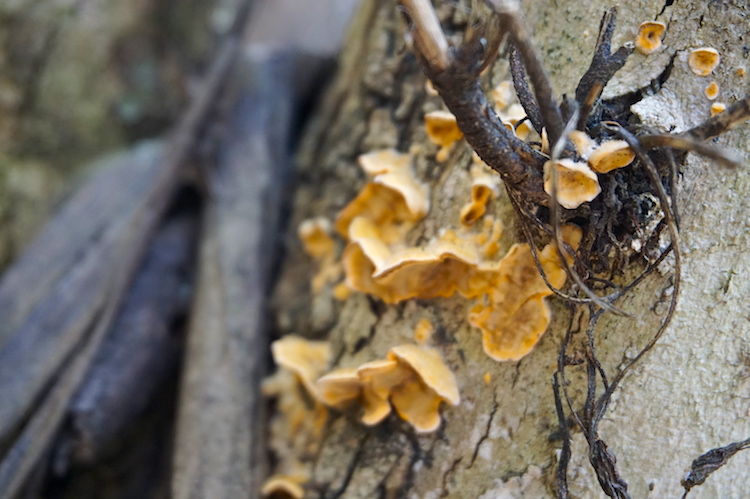
BAAM, which promotes citizen science but also gourmet pleasures, believes in diplomacy and good behavior when it comes to the fragile legal right to forage independently in the woods. Enrique enthusiastically lists about 15 species of edible mushrooms growing in California: chanterelles, porcini, boletuses, blackfeet, yellowfeet, hedgehogs, oysters, candy caps that smell like maple syrup… He also mentions that reishi can be combined with hawthorn, for example, to brew a particularly healthy potion.
Ken and the psilocybins
One of the reasons the authorities are inclined to prohibit foraging for wild mushrooms is the toxic or psychotropic, if not hallucinatory, nature of certain species. “Amanita muscaria [the iconic red and white cartoon mushroom] grows on the pine trees in the Oakland Hills,” explains Ken Litchfield, another veteran BAAM member, at Counter Culture Labs. It’s very common, he says, but you would have to eat a lot of them to become really intoxicated. Psilocybin mushrooms, the “magic” mushroom that is sometimes used to treat post-traumatic stress disorder or suicidal tendencies, also grows in the hills, or wherever there are woodchips. According to research, a single treatment can radically change your perspective on life (or death). And it has nothing to do with Psilocybe cubensis, the hallucinatory mushroom that many people grow at home illegally.
Ken says that the wild species that grows locally on woodchips are little round brown mushrooms with purple and black spores that stain blue when you rub the stem. “But there is another one that looks very similar and has deadly deathcap poisons in it,” he warns. “It grows in the same spot but doesn’t bloom. All these little rules you need to know if you’re out collecting mushrooms to eat.” Also with this in mind, in addition to their educational activities, both MSSF and BAAM organize regular group forages into the woods to find, identify and cook together local species of mushrooms.
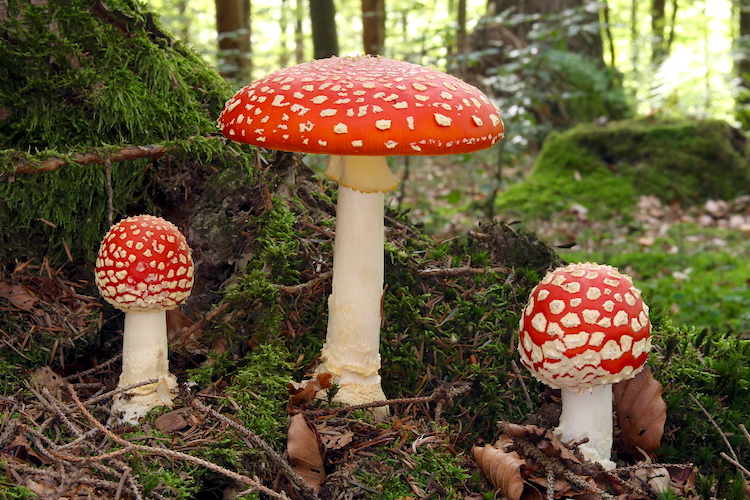
Other BAAM members are working on developing the capacities of certain mushroom strains to decompose petroleum or cigarette butts. Indeed, scientific studies have revealed that various species of mycelium are capable of decomposing materials that go well beyond flora—in fact, anything composed of molecules containing carbon and hydrogen atoms (pesticides, paint, glue, cotton, petroleum, plastics… even a human corpse).
Furthermore, Ken says that all polypores can be transformed into paper or leather to make fabrics for clothes or accessories. Some people grow them in the lab to create mycelian textiles, while many bioartists sculpt or 3D-print the mycelium directly. The “mycotects” of MycoWorks in San Francisco experiment with mycelian engineering and design to create new raw materials that can be flexible or rigid—with the potential to “organically” disrupt traditional manufacturing industries.
Materials by Mycoworks:
BAAM is far from alone in believing that mushrooms can save the world. The Fungi Academy, BAAM’s sister group in Guatemala and a permaculture training center that teaches people how to cultivate mushrooms in a community environment around Lake Atitlán, shares this vision. The Guatemalans even acquired a school bus from the Bay Area, which they converted into a mobile mycolab, extending their mycelian influence down the coast of California, through Central and South America, raising awareness of sustainable practices among younger generations along the way. “We’re spreading like mycelium,” jokes Enrique. “The network is expanding.”
Allison in the garden of many colors
In the Berkeley Hills above Oakland, Allison Shiozaki, another active BAAM member, holds up a long silk scarf in the sunlight. The material, still wet from a sudden rain shower, reflects a range of hues from beige to rust. “The color comes from a mixture of two mushroom dyes: dead man’s foot and Gymnopilus,” Allison explains. “They produce these beautiful copper and yellow colors. Then I just used a rubber band and a rock (Japanese shibori technique) to get the rings.”

To prepare a dye, according to Allison, you need to simmer the mushroom for about an hour, or else put it in a mason jar and leave it in the sun for a few days. Then you can use pH modifiers such as ammonia or vinegar, or mordants such as iron to intensify or shift the color. So the copper becomes a dark chocolate brown, while the yellows become olive greens. It all depends on the mushroom.
“Lichens also produce bright purples, reds and pinks,” Allison continues. “Wolf lichen has a bright yellow-green color, but it’s one that you need to ferment in an ammonia water bath for at least three months. It’s also sensitive to pollution, so hard to find around here. Actually, all lichens grow very, very slowly, so you always want to learn how to ethically harvest them. Never take them out of their environment by scratching them off a rock—it could be a 100-year-old lichen you just tried to mess with! But if they’ve been knocked out of a tree and they’re down on the ground, they won’t keep living. So windfall is an ethical way to harvest lichen, if it’s not a rare one.”

Mushroom and lichen dyes, which started in the 1970s, are relatively new in the world of natural dyes. “Today, the textile industry is the second source of water pollution in the world,” says Allison. “So we’re wearing petroleum-based clothing, even if it’s cotton. Some of these fungi are so locally abundant and easy to find, plus you get these ‘living colors’, which you can’t get in synthetics… so why not use them for dyes?”
Allison, who hosts the “Dye-it-Yourself” table at the MSSF Fungus Fair every December, learned a lot from Alissa Allen, the professional “mycoflorist” behind the Mycopigments website who gives fungus dyeing workshops across the United States.
“My specialty,” says Allison, “is more low-tech garden applications of mushrooms: plugging logs, or learning how to ramp things up even without a really nice lab space. Things that you can do at home with relatively little equipment with incredibly delicious and medicinal mushrooms.”
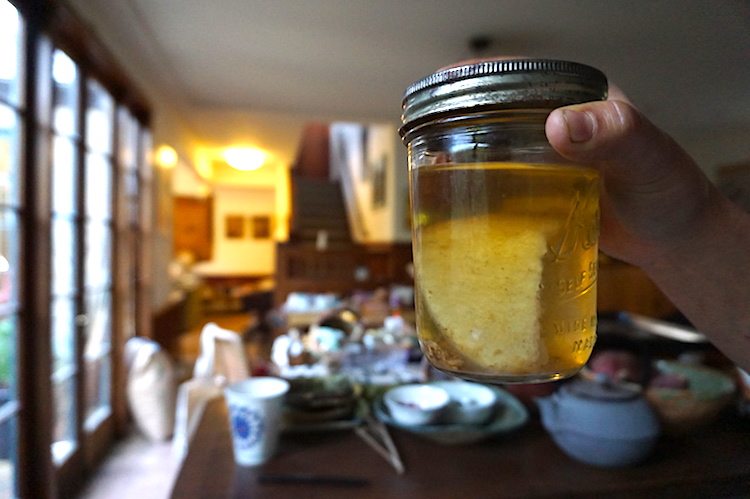
Inside her refrigerator, a minilab of ongoing fermentation projects: SCOBY (Symbiotic Culture Of Bacteria and Yeast) for water kefir, LAB (Lactic Acid Bacteria) for removing smells or simply eating, goat cheese, jackfruit vinegar… Her pantry, an herbarium of dried flora, from hoja santa to lemon blossoms, for all-natural infusions. Outside the house, a non-interventionist Warré beehive houses a colony of bees.
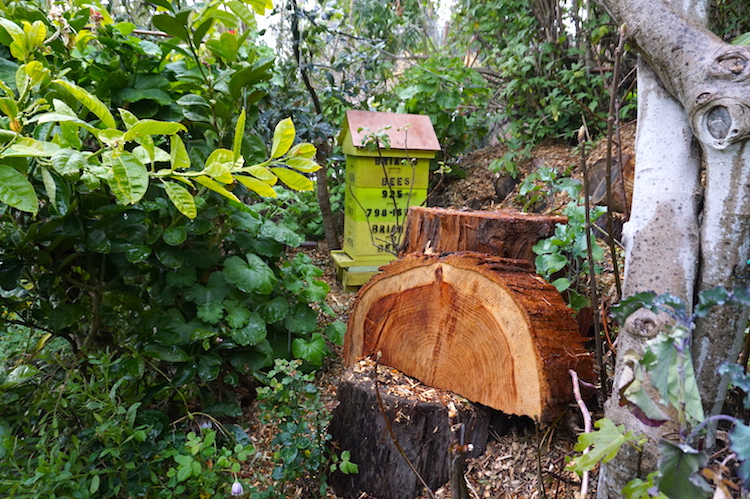
But it’s the sprawling two-acre garden, rising up the hill behind the house, that provides an open natural space for endless discovery and inspiration for all the workshops and other collaborative activities. Allison and her neighbors call these “commons” in the Berkeley Hills, which offer a panoramic view of the bay and San Francisco on the horizon, the Colors Hillside Garden. Here, a spectrum of colors are reflected by the movements of the sun. It’s also a place where you can find chanterelles growing on oak trees, turkey tails, candy caps, lemon trees, five curious goats, fluttering bats at dusk, a frog pond in progress, an owl box, a vintage typewriter…
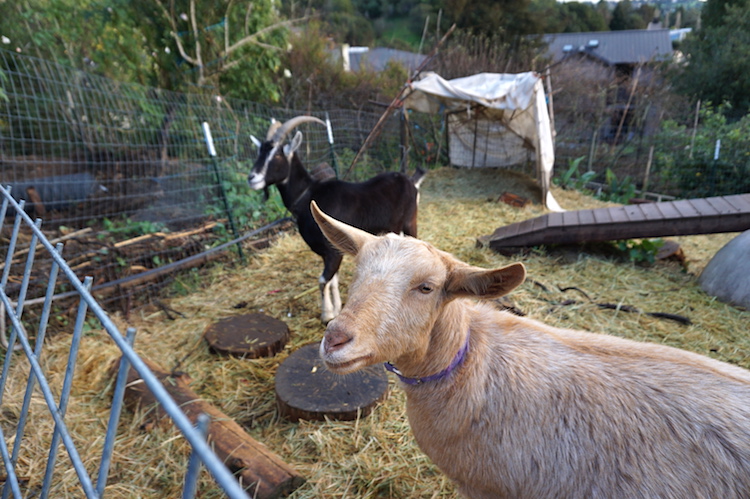
This multicolored garden of life that hosts mushroom workshops, educational walks, lichen dyes, Goat Camp and other permacultural projects, also sprouted out of the ashes of the 1991 Berkeley Hills fire. After everything burned down, everything had to be rebuilt.
If fungi inhabited the Earth millions of years before plants, which inhabited the Earth millions of years before humans, can mushrooms still save us from extinction in the Anthropocene age?

See also our visit to Counter Culture Labs, cradle of Bay Area biohacking
